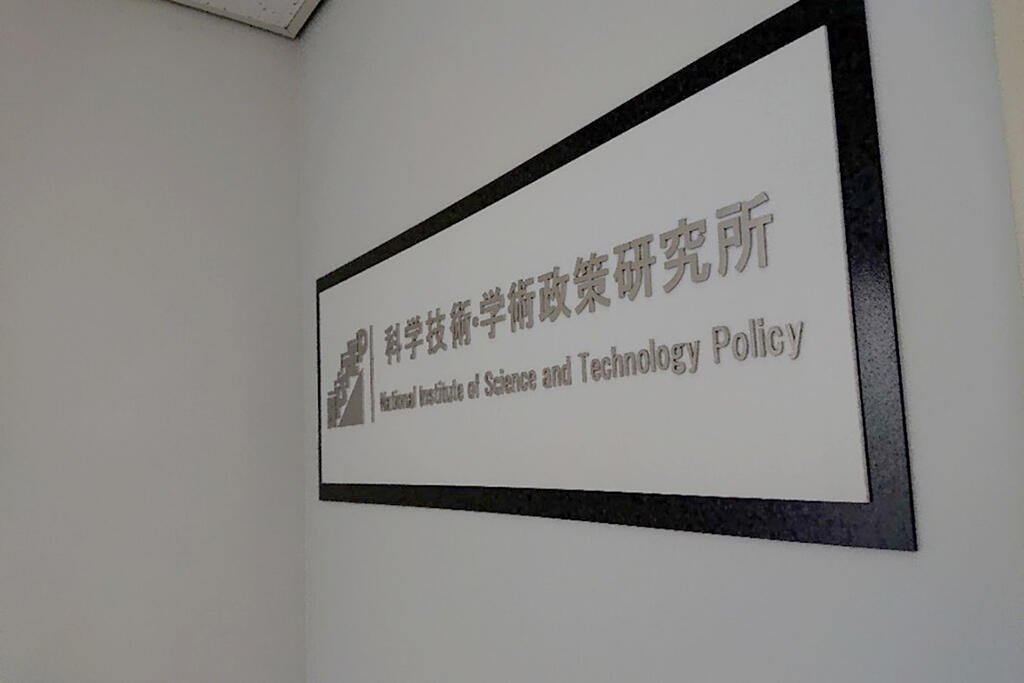
The National Institute of Science and Technology Policy (NISTEP) announced that South Korea has overtaken Japan in the top 10% of most cited papers (fractional count). Japan has now dropped to 12th place. The institute cited long-term declines in the number of doctoral degree holders and the deterioration of research infrastructure (funds, time, and equipment) as causes. In addressing a request for deliberation from the Cabinet Office, the Science Council of Japan published a response titled Strengthening Research Capabilities with a Focus on Improving University Research Environments. The council's Vice Chairman Koichi Hishida (Professor Emeritus at Keio University) said, "These improvements are a long-term challenge. During the deliberations, we focused on issues faced by young researchers, but we would like to continue to provide summaries of recommendations and action plans over the long term."
China leads the world in three indicators
According to NISTEP's Japanese Science and Technology Indicators 2022, in the fractional count (the total number of papers divided by the author's affiliated country), which examines the number of Japanese papers (three-year average from 2018 to 2020) in terms of how they contribute to producing new papers, Japan ranked fifth after China, the United States, Germany, and India, one position down from a decade prior (average between 2008 to 2010). For the top 10% most cited papers, it dropped from sixth to 12th place and was overtaken by South Korea. Amongst the top 1% of papers that attracted the most attention, it dropped from seventh to 10th place. By comparison, China led the global rankings for the top 1% of papers for the first time. It was also among the highest 10% and 1% for number of papers.
Examining the balance of disciplines amongst the share of the top 10% papers, Japan had a higher share for physics, clinical medicine, and chemistry than other fields. On the other hand, the U.S. had a higher share for clinical medicine, basic life sciences, and physics. China had high shares in materials science, chemistry, engineering, and computing and mathematics. Examining the balance of disciplines amongst papers, Japan's share of chemistry, basic life sciences, and physics papers decreased. In contrast, its share of clinical medicine increased significantly, indicating a change in the disciplinary structure of paper writing.
Examining the number of researchers per 10,000 people in the labor force in major countries, in descending order, South Korea had 160.4, France 109.4, Germany 103.8, Japan 98.8, the U.S. 97, and China 29.1. While Japan grew by about 8%, South Korea grew 2.6 times, China 2.9 times, and the U.S. grew by 34%.
In terms of PhD holders, Japan dropped from 16,735 to 15,128 (2008 to 2019). By comparison, the United States increased from 62,314 to 91,887, the United Kingdom from 17,700 to 29,985 (2008 to 2020), South Korea from 9,369 to 16,139, and China from 42,217 to 65,585.
For R&D expenditure (OECD purchasing power parity) in each country's university sector, while Japan's R&D expenditures declined from 2.1 trillion yen to 2.06 trillion yen (2011 to 2020), the United States increased from 6.4 trillion yen to 8.2 trillion yen, Germany from 1.8 trillion yen to 2.6 trillion yen, China from 2.1 trillion yen to 4.5 trillion yen, and South Korea from 0.6 trillion yen to 1 trillion.
Despite these challenging conditions, the number of Japanese papers produced (integer count) increased from 75,415 to 86,317, with the number of top 10% papers increasing from 5961 to 7042 and the number of top 1% papers from 552 to 896. This increase is the result of various policies and efforts in the field of research.
However, the NISTEP TEITEN Survey 2021 perceived inadequacies in the following areas of academic and basic research: environments for exploring new themes and conducting challenging research, basic research diversity, internationally prominent results in basic research, and connecting R&D results to innovation. The institute's perception of the above is strong and has not changed significantly over the past decade. In other words, researchers in the field feel that the environment for conducting basic research is as harsh as ever.
Science Council makes recommendations for enhancing research infrastructure
The Science Council of Japan commends the government's efforts to address the following four issues in the Comprehensive Research Capability Enhancement/Young Researcher Support Package: declining rates of doctoral students entering doctoral programs, stagnant employment rates among doctoral graduates, increases in the proportion of fixed-term positions for young researchers, and the decline in the proportion of faculty research hours. However, it suggests that solving research capability challenges will first require research infrastructure improvements.
The institute defines research capability as human resources (doctoral students x stable postings), research funding, research environments (research hours x core facilities x education, evaluation, and student support), and understanding from society. Therefore, it suggests a total of 10 reforms be implemented to eliminate fatigue amongst all categories of grants-in-aid for scientific research (KAKENHI) and evaluation, including: improve start-up support for young researchers, clarify the position of doctoral students, collaborate with industry, government, and academia to produce diverse doctoral students and career paths to realize a society with highly fluid human resources, strengthen administrative and technical support and maintain core facilities, and optimize educational operations.
These improvements incorporate awareness-raising among researchers, reforms that universities and research institutions should undertake, reforms that the government or funding agencies should undertake, and efforts towards industry-academia-government collaboration. However, as a community of researchers, it is necessary to clarify the criteria used to reference each field's academic characteristics and research capabilities and to communicate the desired evaluation style to society. The recommendations also point out that optimistically assuming that improvements can be achieved by implementing just a few measures is no longer valid. All measures must be promptly implemented in a multifaceted manner.
This article has been translated by JST with permission from The Science News Ltd.(https://sci-news.co.jp/). Unauthorized reproduction of the article and photographs is prohibited.




